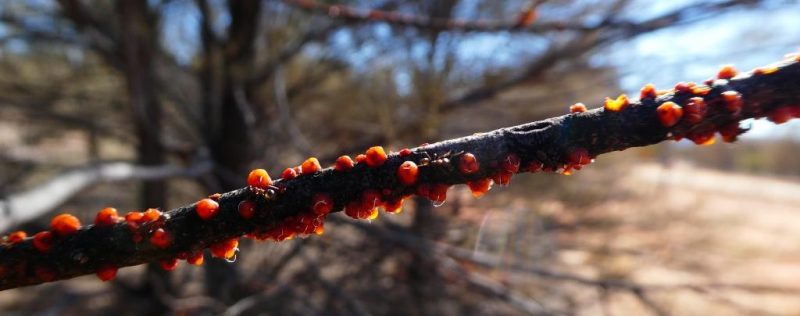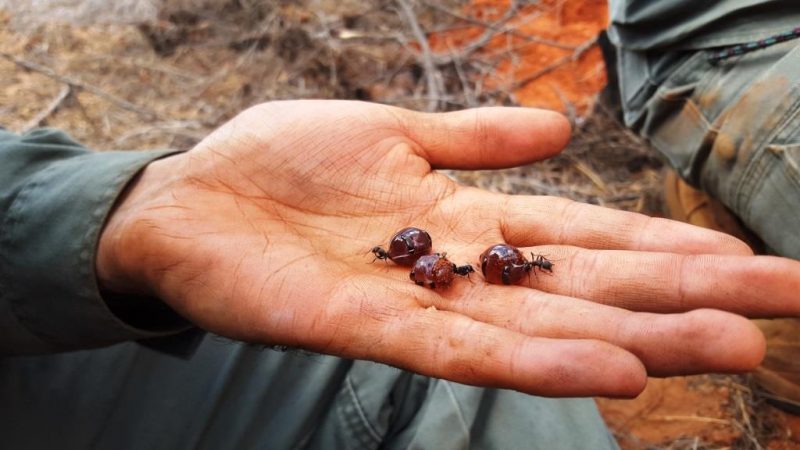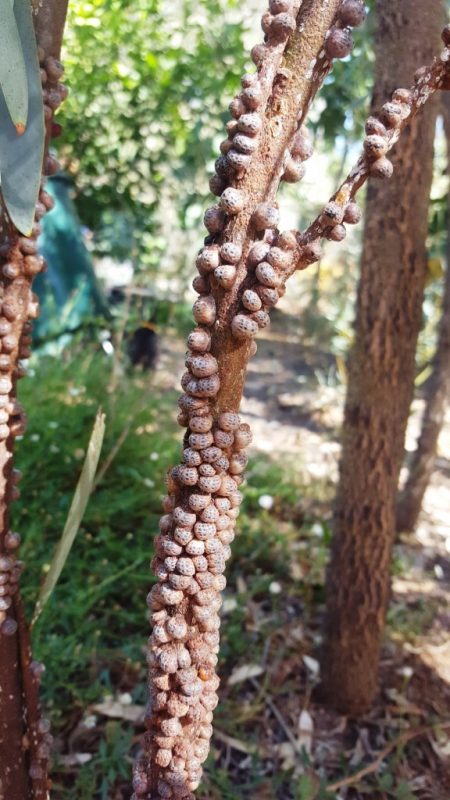
At a recent Land for Wildlife property assessment, I came across a great example of Red Mulga Lerp that I wanted to share with the members. Red Mulga Lerp (Austrotachardia acacia) is a structure produced by the larvae of ‘lac’ insects. The Red Mulga Lerp is found on Mulga (Acacia aneura) bushes and the crystallised structure is produced when the branches are attacked by the lerp insect and feed on the sap of the Mulga. The lerp insect then excretes a delicious sugary gum (called the honeydew), which crystallises around the insect larvae.
It is suggested that the female lerp insect produces the structure as a protective cover in an insect-plant interaction, where the herbivorous insect would likely have evolved long after the plant itself. Honey Ants (Camponotus inflatus) are fed by the honeydew made by the Red Mulga Lerp. The Honey Ants can then protect the lerp insect from other predators, while receiving their sugary reward. The honeydew is used by the worker Honey Ants to feed to the repletes (living larders), which are found in nests up to 2 m deep on the shady side below Mulga trees.

The red lumps (lerp) that form along the Mulga stems are edible and can be peeled or sucked off the branches, commonly used by many central Australian Indigenous groups as bush food. While we are talking about Mulga and the pantry of food that can be found among their branches, it is commonly known that Mulga seeds can be roasted and ground to a paste and eaten. In addition, the species produces an edible gall known as a Mulga Apple (as well as several other forms of inedible galls). These are produced by a Wasp larva and tastes like dried apple.
~ Caragh Heenan

Categories:
Invertebrates, Native Fauna, Nest, Plants